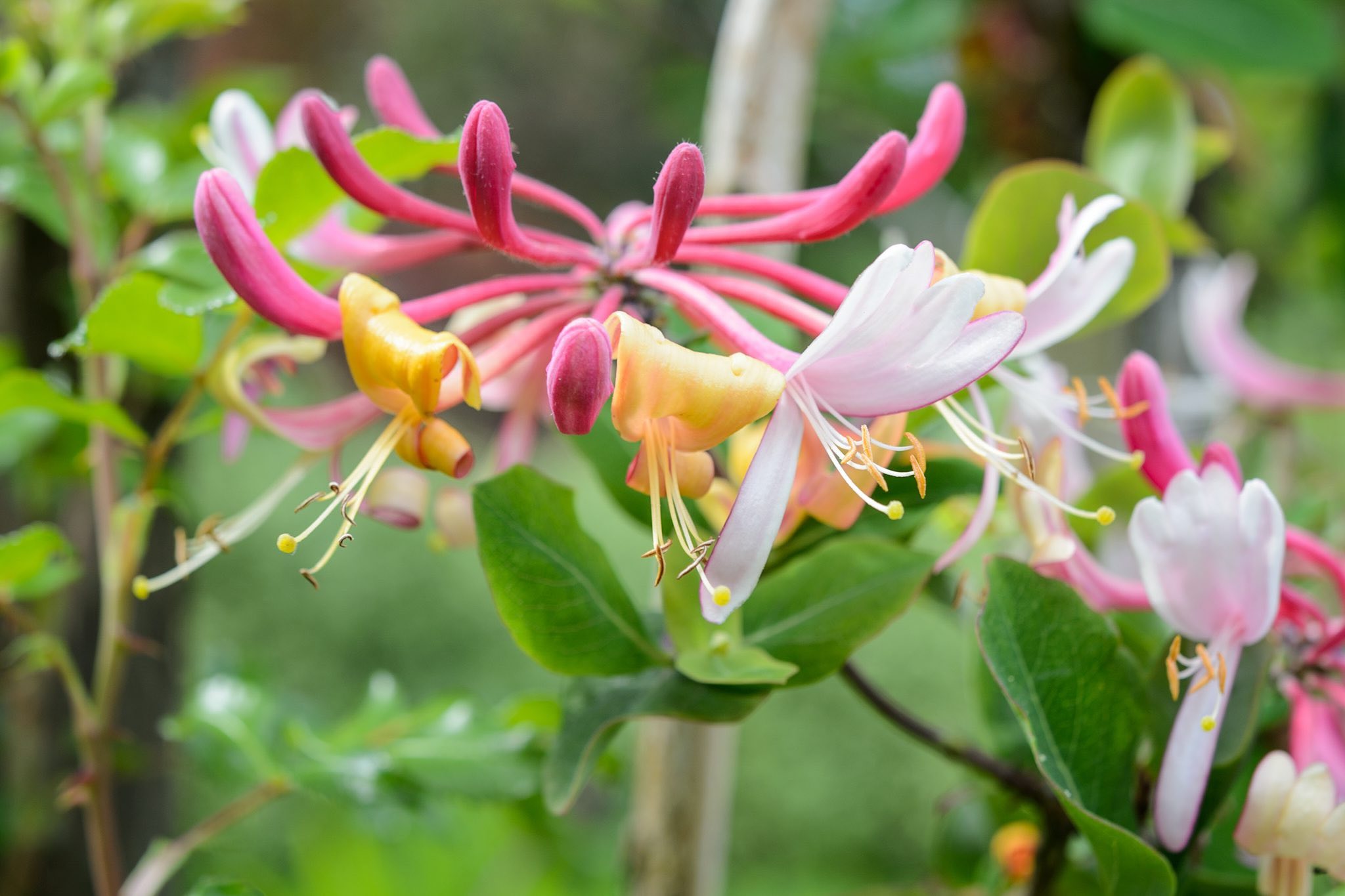
Lonicera, commonly known as honeysuckle, is a fascinating plant with a rich history and diverse uses. Did you know that there are over 180 species of Lonicera? These plants can be found in various forms, from climbing vines to shrubs. Honeysuckle is not just a pretty face; it has been used in traditional medicine for centuries. Its sweet-smelling flowers attract pollinators like bees and hummingbirds, making it a favorite in many gardens. Some species even produce edible berries, though caution is advised as not all are safe to eat. Curious about more intriguing facts? Keep reading to uncover 25 amazing tidbits about this versatile plant.
What is Lonicera?
Lonicera, commonly known as honeysuckle, is a genus of arching shrubs or twining vines in the Caprifoliaceae family. These plants are known for their sweetly scented flowers and attractive berries. Let's dive into some fascinating facts about this beautiful plant.
General Facts About Lonicera
Lonicera has a rich history and diverse characteristics. Here are some general facts to get you acquainted with this lovely plant.
- Lonicera Species: There are about 180 species of honeysuckle, found mainly in the Northern Hemisphere.
- Flower Colors: Honeysuckle flowers come in various colors, including white, yellow, pink, and red.
- Fragrance: Many honeysuckle species are known for their sweet, intoxicating fragrance, especially in the evening.
- Growth Habit: Honeysuckles can be either deciduous or evergreen, depending on the species and climate.
- Pollinators: These plants attract a variety of pollinators, including bees, butterflies, and hummingbirds.
Ecological Importance of Lonicera
Honeysuckles play a significant role in their ecosystems. They provide food and habitat for various creatures.
- Birds and Berries: Birds love honeysuckle berries, which are a crucial food source in many regions.
- Habitat: Dense honeysuckle thickets offer excellent shelter for small animals and birds.
- Erosion Control: Some species, like Lonicera japonica, are used to control soil erosion due to their extensive root systems.
- Invasive Species: Certain honeysuckle species, such as Lonicera maackii, are considered invasive in some areas, outcompeting native plants.
- Medicinal Uses: Traditional medicine has utilized honeysuckle for its anti-inflammatory and antibacterial properties.
Cultivation and Care
Growing honeysuckle can be rewarding, but it requires some knowledge and effort. Here are some tips and facts about cultivating these plants.
- Sunlight Requirements: Honeysuckles thrive in full sun to partial shade.
- Soil Preferences: They prefer well-drained soil but can tolerate a range of soil types.
- Watering Needs: Regular watering is essential, especially during dry periods, to keep the plants healthy.
- Pruning: Pruning is necessary to maintain shape and encourage new growth. It should be done after flowering.
- Propagation: Honeysuckles can be propagated through seeds, cuttings, or layering.
Interesting Historical Facts
Honeysuckles have been part of human culture for centuries. Here are some historical tidbits.
- Ancient Symbolism: In ancient times, honeysuckle symbolized devoted love and fidelity.
- Victorian Era: During the Victorian era, honeysuckle was often used in floral arrangements to convey affection.
- Folklore: Folklore suggests that bringing honeysuckle into the house can bring good luck and protect against evil spirits.
- Literature: Honeysuckle has been mentioned in various literary works, symbolizing beauty and romance.
- Art: The plant has inspired many artists, appearing in paintings, tapestries, and other forms of art.
Fun and Quirky Facts
Let's end with some fun and quirky facts about honeysuckle that you might not know.
- Edible Flowers: Some honeysuckle flowers are edible and can be used to make teas, syrups, and desserts.
- Scented Evenings: The fragrance of honeysuckle intensifies in the evening, making it a favorite for night gardens.
- Hummingbird Magnet: Hummingbirds are particularly attracted to the tubular flowers of honeysuckle.
- Natural Dye: Honeysuckle berries can be used to create natural dyes for fabrics.
- Longevity: Some honeysuckle plants can live for decades, providing beauty and fragrance year after year.
The Final Word on Lonicera
Lonicera, or honeysuckle, is more than just a pretty plant. With its sweet-smelling flowers and vibrant colors, it’s a favorite in gardens. But did you know it’s also a hardy survivor? These plants can thrive in various climates and soil types. They’re not just eye candy; they offer medicinal benefits too. Some species have been used in traditional medicine for centuries. Plus, they’re a hit with pollinators like bees and butterflies, making them a great choice for eco-friendly gardening. However, be cautious—some types can become invasive, taking over local flora. So, while they’re beautiful and beneficial, they need to be managed carefully. Whether you’re a seasoned gardener or a newbie, Lonicera offers something special. It’s a plant that combines beauty, resilience, and utility, making it a standout in any garden.
Was this page helpful?
Our commitment to delivering trustworthy and engaging content is at the heart of what we do. Each fact on our site is contributed by real users like you, bringing a wealth of diverse insights and information. To ensure the highest standards of accuracy and reliability, our dedicated editors meticulously review each submission. This process guarantees that the facts we share are not only fascinating but also credible. Trust in our commitment to quality and authenticity as you explore and learn with us.
